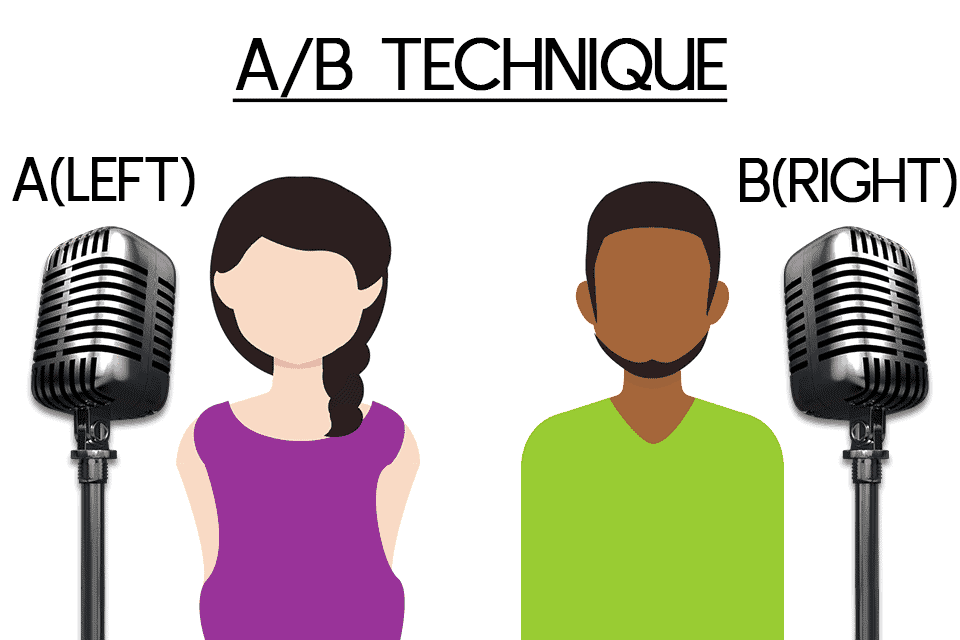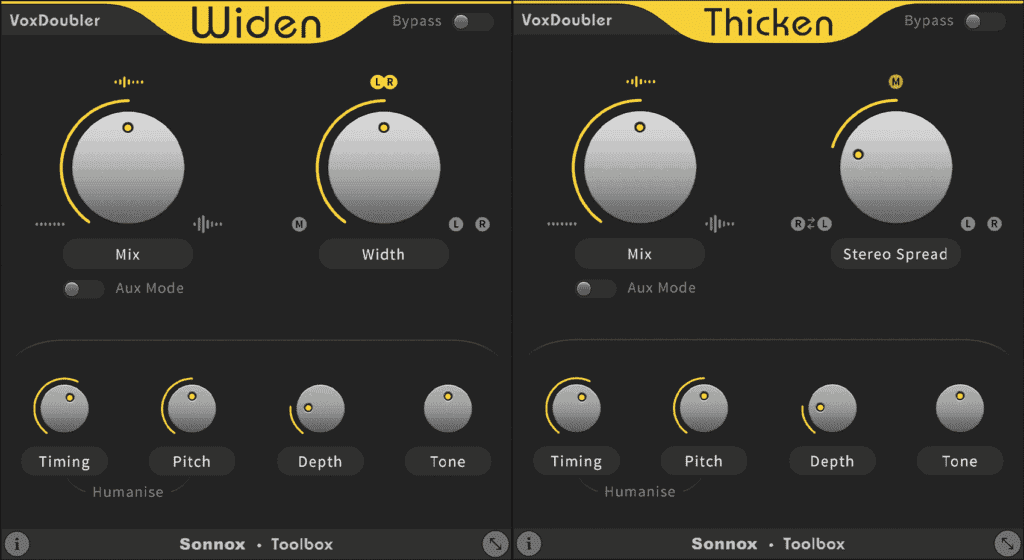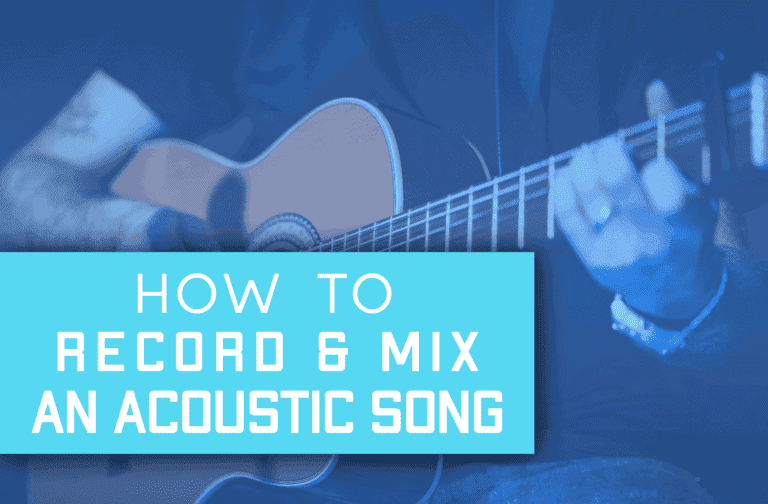When I started producing and mixing music, I didn’t know whether vocals should be mono or stereo.
So at first, I took a lot of chances, and sometimes I could get the vocals how I wanted, but sometimes I couldn’t.
As time passed, I have researched this topic and experimented with thousands of vocal tracks, therefore, I was able to find what works best in every scenario.
If you record one vocalist, your vocals should be mono. However, if you record two vocalists or more or if you record in a room with unique acoustics, the vocals should be stereo.
Moreover, recording vocals in mono makes them sound powerful, clear, and upfront. And, recording vocals in stereo makes them sound wide, large, and soft.
In the rest of the article, I’ll explain every aspect of this topic, so you can dive in deep, and become a professional mixing engineer when it comes to mono and stereo vocals.
For your convenience, here’s a table of contents that will guide you through the topics of the article.
The Difference Between Mono And Stereo
To understand whether we should set our vocals to mono or stereo, we have to understand what’s the difference between the two.
The difference between mono and stereo is the number of channels that they send to the speakers.
Mono tracks send only one channel to all speakers. However, stereo tracks send one channel to the left speaker and a slightly different channel to the right speaker. That way, stereo tracks sound wide, detailed, and a lot more realistic.
Mono
As written above, mono tracks send only one signal to both left and right channels.

They can be reproduced through several speakers, but all speakers will still produce the same signal.
Have a look at this illustration to better understand it.

Stereo
Stereo channels send two signals, one for each speaker.

This way, two different channels are being used, one for the left speaker and one for the right speaker.
You can use stereo channels to create directionality, perspective, and space, and take advantage of its sound since the vast majority of audio systems today support stereo signals.

Conclusion
With stereo, each one of your ears gets a signal that is different from the signal that the other ear is getting. With mono, both your ears get the exact same signal.
If you want to learn more about this topic and about how to use stereo signals to your advantage so you can make your tracks sound professional, check out this article that I’ve written about the difference between mono and stereo, and how you can take advantage of it.
Mono VS Stereo – What’s The Difference And How To Use It!
Should You Record Vocals In Mono Or Stereo?
If you record one vocalist, you should record him in mono. However, if you record two vocalists or more, you should record them in stereo.
However, you should also consider the way you want your vocals to sound. Recording vocals in mono makes them sound powerful, clear, and upfront. And, recording vocals in stereo makes them sound wide, large, and soft.
You record one singer in mono since he can only produce one signal. Therefore, even if you record him in stereo there will be no difference between the left and right channels, making the process of recording in stereo useless.
But, when you record multiple elements, you would rather record in stereo to take advantage of the differences between the different elements’ left and right channels and create width.
Nevertheless, there may be situations where trying to record one singer in stereo might actually be useful.
For example, if you’re recording in a room with unique acoustics, you may want to try and record the lead singer in stereo.
But, notice that this will make the mixing process much more complicated, and you may end up dealing with some phase cancellation issues, so be careful.
Phase cancellation issues cause stereo recordings that sound amazing in stereo to sound horrible in mono.
If you’ve ever faced an issue such as this one, go check out my article about mono compatibility, where I give my best 7 tips for dealing with phase cancellation issues and making your tracks mono-compatible.
My Favorite Way To Record In Stereo

What You Need:
For this method, you need two omnidirectional microphones.
How To Position The Microphones
Basically, what you’ll need to do is to position each microphone towards a different part of the thing you’re recording.
This way, you get ‘A’ and ‘B’ parts that you can combine and create a full, beautiful stereo image.
How To Mix Them
What I’ve found that works best for me is panning the ‘A’ channel about 75% left, and the ‘B’ channel about 75% right, and then fine-tuning from there.
The higher the percentage, the bigger the stereo image, and the higher the risk of phase issues.
Should A Vocal Reverb Be Mono Or Stereo?
Since stereo reverb simulates the feeling of space, I usually set the reverb on my vocals to stereo, as it helps to create a realistic sound.
But, even though stereo reverb sounds great and exciting on its own, it might have a negative effect in the context of a mix.
Also, notice that the result will be much better if you pan it the same way as the source.
But, it really depends on the context of the vocals with the song.
If you want the vocals to fill out empty spaces, and to be less upfront, you should use stereo reverb such as hall reverb, studio reverb, etc.
But, if you want the vocals to be more directional and upfront, you should use mono reverb such as plate reverb.
To instantly improve your skills using reverb I highly suggest that you check out the tutorial I’ve written where I explain all the basics, and give you all of my top tips and the common mistakes that you should avoid to use reverb correctly.
How To – Use Reverb The Right Way
Should Background Vocals Be Mono Or Stereo?
Since backing vocals should give width, and power to the main vocals, I usually set them to stereo.
The only time I consider setting the background vocals to mono is when I try to mix a duet, and I want the two singers to sound unified.
How To Make A Mono Vocal Recording Stereo
If you couldn’t record authentic backing vocals, or if you want to get the main lead vocals to sound stereo, there are two ways you can make the same effect.
The Simple Method – Get A Vocal Doubler Plugin

This method is easier to use than the manual way.
And most of the time, unless you’re a total expert, you’ll get much better results with it since there are plugins that were built by professional sound&mixing engineers particularly for this matter.
Such plugin that I really recommend is VoxDoubler plugin by Sonnox.
I’ve downloaded it a couple of months ago, and I use it each and every time that I turn mono recordings to stereo.
It’s surprisingly simple, super effective, and super mono-
It lets you control the widening in an advanced and customizable way, and it comes with two standalone plugins – VoxDoubler Widen, and VoxDoubler Thicken.
VoxDoubler Widen – generates two new mono voices and pans them to the left and right of the original vocal. This version would usually sound wider, and better in stereo, however, it’s less mono compatible.
VoxDoubler Thicken – generates a new stereo doubled voice and overlaps it with the original vocal. This version usually sounds a little narrower, however, it’s super mono compatible.
Both versions have six knobs –
- Mix – Can help you balance the dry and wet signals of the plugin.
- Timing – Can help you humanize the vocals.
- Pitch – Can help you humanize the vocals.
- Depth – Can help you push the new doubled voices deeper into the mix, and make them less upfront.
- Tone – Can prevent sibilant doubles from becoming distracting, or to brighten those that are too muddy.
- Width (Only In Widen)- Determines the width of the stereo vocals.
- Stereo Spread (Only In Thicken)- Determines the panning percentages of the left and right vocals. 100% will send the left vocals a 100% left and the right vocals a 100% right.
I usually set the width/stereo spread to about 25% when I want a subtle effect, and to about 75%-100% when I want a super wide effect (usually for the chorus).
I also usually set the Timing knob to about 15% – 35% depending on how loose I want the vocals to sound, the Pitch knob to about 10% – 25%, the Depth knob to about 20% depending on how the vocals interrupt the mix (as they interrupt more, I would set the Depth higher).
For the tone knob I don’t have a go-to setting since it really depends on the vocals, and the singer.
If the vocals sound muddy, set the tone to a positive amount, so it takes out of the low-end. But, if the vocals sound too bright, set the Tone to a negative amount so it takes out of the high-end.
And of course, you shouldtry and experiment to see what works for you, and your mix.
Check Out VoxDoubler On Plugin Boutique’s Website.
The Manual Method
To use this method you’ll need to do a bit more work, but its free to use as long as you have a DAW.
What You Need To Do:
- Create two extra channels — one for the left signal and one for the right. The original channel will be your main vocals channel.
- Copy your track to them and pan them accordingly – As written above, I usually start with panning the left channel to 75% left, and the right channel 75% right, and then I fine-tune them.
- Add a small delay between the channels – I usually set the left channel to start 10-20ms before the main channel and the right channel to start 15-30ms after the main channel.
Conclusion
- If you record two people or more, an instrument, or if your recording room has unique acoustics – you should try and experiment stereo recording.
- Whether your vocals should be in stereo or mono depends on the amount of singers that you record, and on how you want them to sound.
As written above, if you want them to sound large, wide, and soft, they should be stereo.
But, if you want them to sound powerful, clear, and upfront, they should be mono.



![How To Mix Your Beats In 6 Steps! [With Examples]](https://wealthysound.com/wp-content/uploads/2020/11/How-To-Mix-Your-Beats-In-6-Easy-Steps-Thumbnail-768x504.png)



